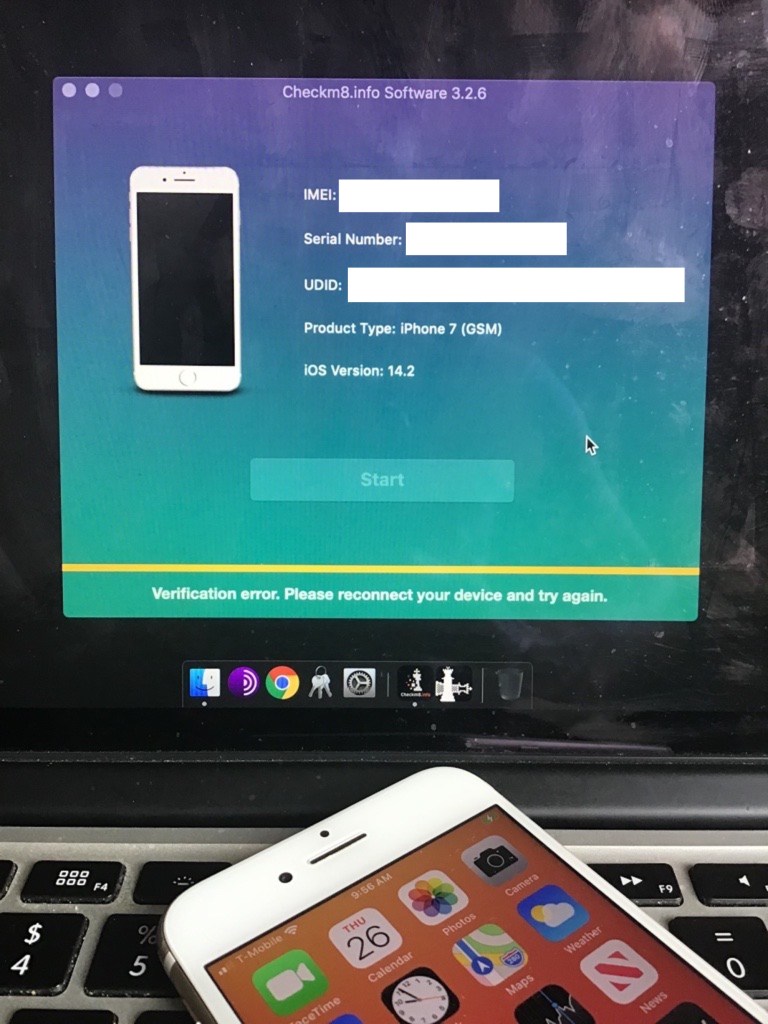Images courtesy of Anni Maarit
Your next smartphone will probably cost a couple hundred dollars, but the costs don’t end there. Just getting the raw materials can take a toll on the life of a child tin miner in Bangka, Indonesia.
That’s the point Finnish street artist Sampsa—aka the “the Banksy of Finland”—wants to drive home to gadget owners with his latest political street art campaign.
Videos by VICE
The campaign comes on the heels of a spate of news reports about the “deadly tin” inside your phone or tablet. Major electronics companies like Apple and Samsung source the tin used as solder from mines on Bangka Island. The unregulated mills run on child labor, are destroying the environment in the region, and are so dangerous police estimate the death toll averages one worker every week.
One-third of the world’s tin is mined in Bangka, and half of that goes to the electronics industry. Gadget manufacturers are increasingly under the gun to address the issue—especially the notoriously secretive Apple, which has yet to fess up to this dirty link in its supply chain.
Sampsa told me he first became interested in the issue after reading a Businessweek article this summer about the deplorable work conditions in the mines, and then bringing the conversation up with an American friend over a pint.
“It ended with him commenting about the Indonesian miners dying that ‘it’s those people’s problem, they should fight for better rights,’ he said over email. “When I asked this person, would he be purchasing anymore iProducts in the future, he said absolutely’ without delay. It occurred to me then that empathy was slowly being removed from human conditioning. To this person, five deaths a month was justifiable for the products he so Loved.”
The artist’s campaign targets Apple, and specifically the late Steve Jobs, for pushing into the market a business model that relied on planned obsolescence—designed to have a short lifespan to keep you buying the next version. Sampsa argues that Apple pushed its supply chain to conform to this standard, ignoring the collateral costs. The Obsolescence is King artwork series is about defacing Jobs as an icon—to point out that his legend should be his role in designing planned obsolescence.
“Is Apple the only one benefiting from cheap tin on Bangka Island? No,” the artist said. “Was Apple’s demand and harsh terms to the supply chain what excelled the horror Bangka Island has faced? Yes. Has the upper tier management at Apple known about Bangka all along—you bet your ass they did. Problems there have been reported into the public domain as far back as 2007.”
Under pressure from environmental groups, most major smartphone players by now have released statements that they understand their supply chains involve conflict minerals from Bangka Island, and are concerned about the issue. But Apple has been tight-lipped on the issue.
“To come clean that you knew of the deaths, you knew children were dying, land and sea was being decimated—and you continued to drive your supply chain like a pack of rabid dogs to produce—would be to admit too much and too far away from the public image they so enjoy,” Sampsa said.
Now if sales dropped, phone companies would have more to say on the issue, the artist argued. Any real change will take a shift in public opinion, and that’s where the street art campaign comes in. Sampsa wants to bring together well-known street artists around the world to exhibit in London and raise awareness about the issue of conflict minerals.
“There are tens of millions of street artists and hundreds of millions of clicks watching us,” he said. “I think we could help sway public thinking to be more critical of the situation.”
He’s teamed up with the environmental group Friends of the Earth, which has been leading the charge against smartphone companies to address the issue. The group has released a report detailing the scene in Bangka: “Silt from tin mining is killing coral reefs and seagrass eaten by turtles, driving away fish, and ruining fishermen’s livelihoods. Farmers struggle to grow crops in soil left acidic after the destruction of forests for tin mining.” It’s calling for government policies to encourage companies to keep their supply chains clean.
Street art can help, Sampsa argued. The child labor images above and below play on the two sides of the coin, he explained. One side depicts a child’s future unfolding in a tumultuous winding road of physical labor. The other shows a child wearing a shirt and tie, with Apple logos reflecting in the glasses. “This child has the knowledge of the tin mines and is praying for the sin of enjoying the product with guilty pleasure,” he said.
Many artists consider the art as the activism in-and-of-itself, Sampsa said, but that’s not enough. “If you call yourself a political and/or socially conscious artist, then take the extra step to manifest what it is you are expressing.”
To that end, he hopes to help recover reparations for families in Bangka Island who have lost loved ones or their livelihood. Friends of the Earth has a plan to repair the environmental damage on farms and the coral reefs. It wants to see laws forcing companies to report on the human and environmental impacts of their business.
Sampsa’s got some ideas, too. “Maybe everybody around the world with a smartphone in their pocket donates one,” he said. One dollar, one yen, one peso, one euro. One as a symbol of one person not willing to accept loss of life in order to receive product. One person to signify to the corporations that this is not acceptable. And perhaps if companies like Apple at 400 billion in assets could equal, double, triple—heck contribute 10 times the amount we recover.”
“I believe if any change is going to come in modern times, it is going to have to come from us—the consumers.”



